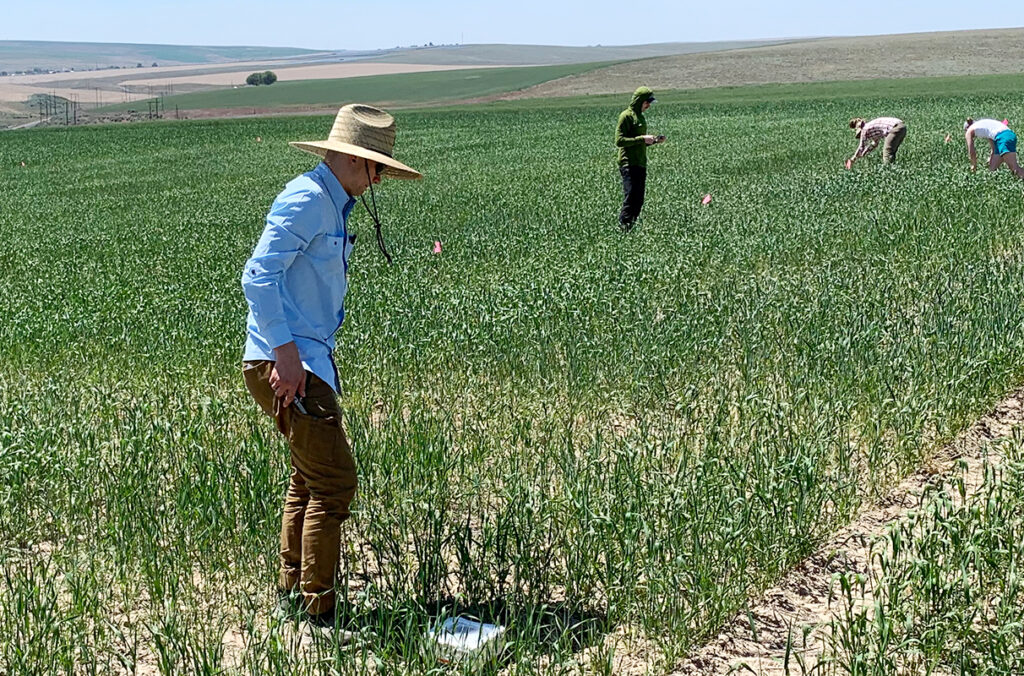An effort to identify genes in spring wheat that would allow it to be more heat and drought resilient recently earned more than $2 million in funding.
Washington State University researchers are leading an international team that was awarded a five-year, $1 million Seeding Solutions grant from the Foundation for Food and Agriculture Research. The Washington Grain Commission, WSU, Flinders University, LongReach Plant Breeders, and the OA Vogel Wheat Research Fund provided additional funds, which put the total investment in the research project over the $2 million mark.
“There’s no simple way to find out how plants cope with increased heat and drought conditions at the genetic level,” said Andrei Smertenko, associate professor in WSU’s Institute of Biological Chemistry and the lead principal investigator of the project. “Discovery of the resiliency genes is difficult because chemical reactions inside plants are hard to observe.”
Wheat, like most plants, avoids over-heating by evaporating water from leaves. But if water is in short supply, that’s not sustainable. Increasing heat accompanied by low soil moisture content also makes plants produce highly toxic chemicals known as reactive oxygen species, ROS for short. ROS deteriorate plant health by unsettling all processes in cells. The more of these chemicals produced, the lower the yield.
ROS production in plant is difficult to measure. The team will use a new technique invented in Smertenko’s lab to find genetic markers in spring wheat correlated with reduced ROS production. If those markers are found, then breeding programs can exploit those to develop varieties with reduced damage from reactive oxygen species.
Most ROS are detoxified by tiny cell components called peroxisomes. The number of peroxisomes in plants increases in response to ROS production. Once these chemicals pose no threat, the number of peroxisomes returns to normal.

“We have developed an innovative way to use a small fluorescent probe that detects peroxisomes in cells to assess efficiency of ROS detoxification by individual plants,” Smertenko said.
Smertenko is working with Michael Pumphrey, WSU’s O.A. Vogel Endowed Chair of Spring Wheat Breeding and Genetics and an international team. This project features test sites in Washington, Mexico and Australia. The next step will add locations in Kazakhstan and Ukraine.
“We hope measuring wheat varieties adapted to different geographical locations will reveal genetic markers of lower oxidative damage,” Smertenko said. “Our collaborators in the International Maize and Wheat Improvement Center will help to share the markers and genetic lines with breeders around the world.”
The work will take time because scientists will start with hundreds of genetically different varieties and funnel that down to less than a dozen that are the most promising, he said.
The international aspect is helpful because response to heat and drought stress can vary dramatically depending on soil composition. Testing varieties in different environmental conditions will increase the values of the identified genetic markers.
“Our project is part of a global network of researchers that want to help fight for food security by advancing breeding strategies,” Smertenko said. “I’m excited to continue my work helping with this effort.”







